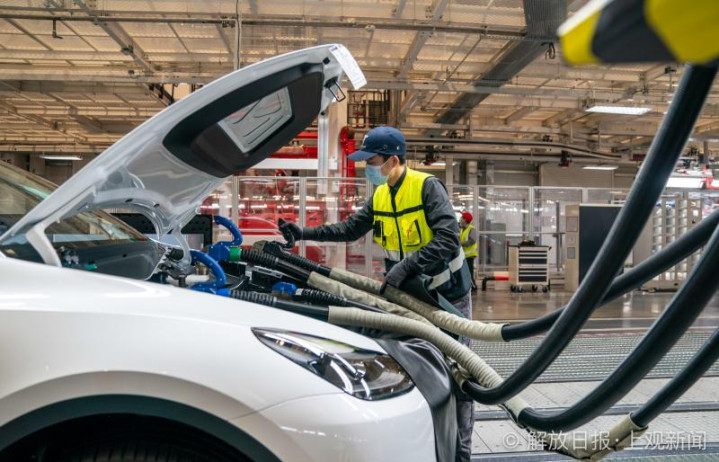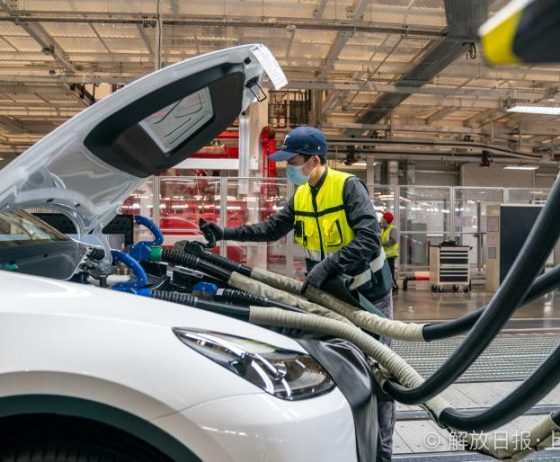Tesla China cleared the air regarding rumors of 4680 battery cells being used in vehicles built at the company’s Gigafactory Shanghai facility. According to the post, rumors have indicated that China-built Tesla vehicles are equipping the company’s 4680 cell chemistry, which was unveiled two years ago at Battery Day.
“In order to protect the interests of consumers, and in response to the special action of relevant departments to rectify rumors on the Internet, the following explanations are made in response to several recent rumors about Tesla China on the Internet,” Tesla’s Customer Support account wrote on Weibo yesterday.
It makes two points, the first being that no Tesla vehicles built in China use 4680 cells. “No matter what kind of battery is used, the products we provide to customers can meet Tesla’s strict product requirements and well meet vehicle performance indicators such as safety, battery life, and acceleration,” the account then wrote.
Additionally, the company clarified that “recent hype by some individuals…about Tesla ‘is about to change its model’” is a rumor that “deliberately misleads consumers.” Tesla then said that it would encourage people to point them in the direction of those who are starting these rumors so they can be held responsible.
“At the same time, prospective car owners are requested to pay attention to the changes in the delivery cycle and arrange the pick-up time reasonably,” the company also said. “Vehicles produced at Tesla’s Shanghai Gigafactory are usually exported to overseas markets in the first half of each quarter and supplied to the domestic market in the second half.”
The second part of that quote was revealed by CEO Elon Musk over a year ago as Gigafactory Shanghai was supplying Europe with cars as Gigafactory Berlin completed construction.
Elon Musk explains Tesla’s local and export strategy for factories like Giga Shanghai
Tesla has dealt with major misinformation campaigns against it in China for several years. After dealing with numerous fabricated stories, including several that put into question the effectiveness of Tesla’s braking systems, the company started suing those who made up stories about their vehicles failing.
For now, 4680 battery cells are being utilized for Model Y builds at Gigafactory Texas. Suppliers such as Panasonic have already started sending test samples of the cell to Tesla as they will eventually begin producing the battery for the electric automaker. Tesla produces the batteries in-house in California, but plans to begin manufacturing the cells at Gigafactory Texas by the end of this quarter.
Tesla China’s Weibo post was written as follows:
“In order to protect the interests of consumers, and in response to the special action of relevant departments to rectify rumors on the Internet, the following explanations are made in response to several recent rumors about Tesla China on the Internet:
1. Tesla models made in China currently do not use 4680 batteries in Plans for any new model batteries within. No matter what kind of battery is used, the products we provide to customers can meet Tesla’s strict product requirements and well meet vehicle performance indicators such as safety, battery life, and acceleration.
2. The recent hype by some individuals and self-media about “Tesla is about to change its model” is completely a rumor that deliberately misleads consumers. I hope everyone can provide us with clues, and we will hold the rumour-mongers accountable.
At the same time, prospective car owners are requested to pay attention to the changes in the delivery cycle and arrange the pick-up time reasonably. Vehicles produced at Tesla’s Shanghai Gigafactory are usually exported to overseas markets in the first half of each quarter and supplied to the domestic market in the second half.
We are very grateful that so many users choose Tesla because of their trust and love. We will continue to strive to provide customers with excellent products and user experience! Thanks again for your attention!”
I’d love to hear from you! If you have any comments, concerns, or questions, please email me at joey@teslarati.com. You can also reach me on Twitter @KlenderJoey, or if you have news tips, you can email us at tips@teslarati.com.

News
Tesla dominates in the UK with Model Y and Model 3 leading the way
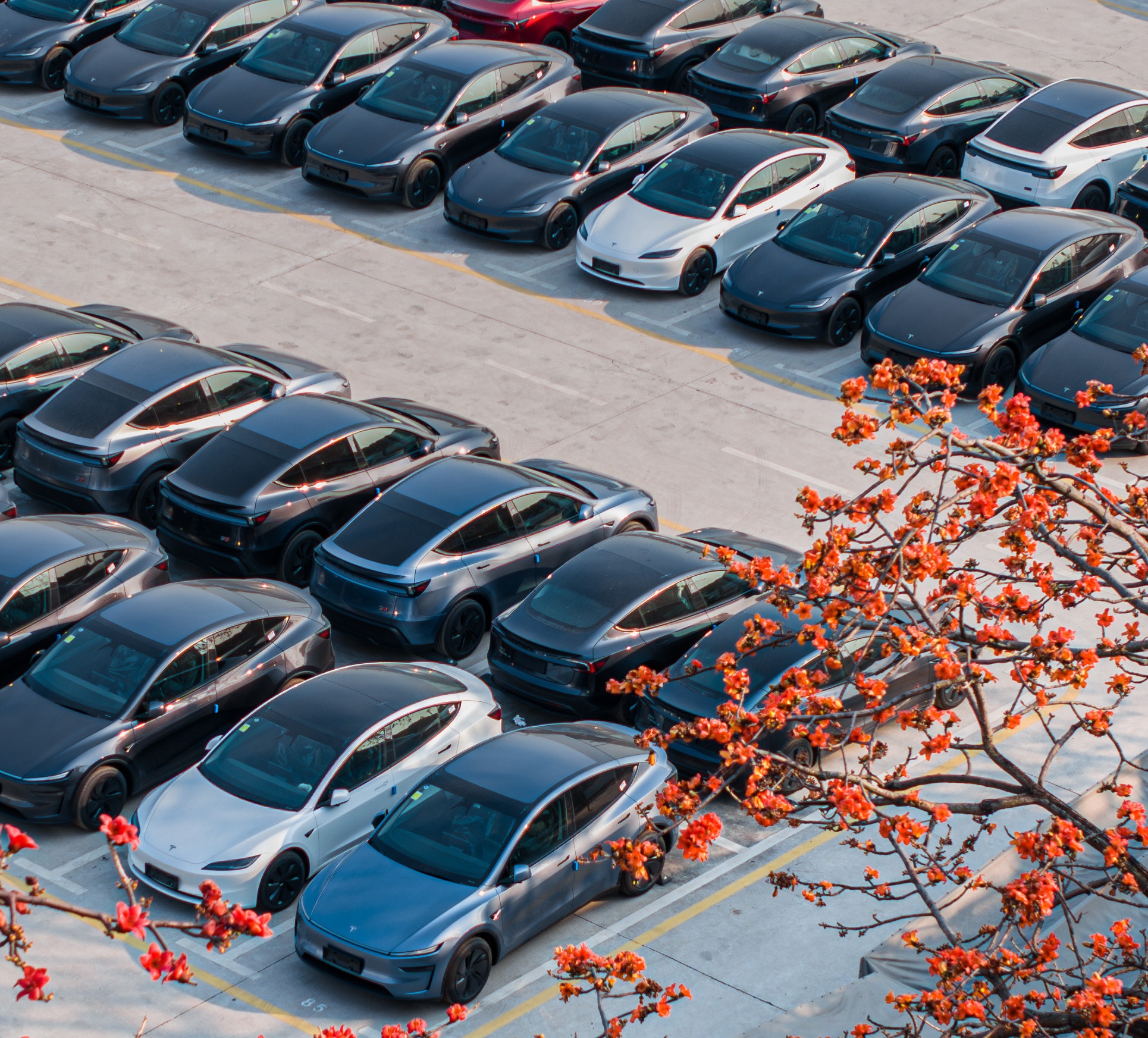
Tesla is dominating in the United Kingdom so far through 2025, and with about two weeks left in the year, the Model Y and Model 3 are leading the way.
The Model Y and Model 3 are the two best-selling electric vehicles in the United Kingdom, which is comprised of England, Scotland, Wales, and Northern Ireland, and it’s not particularly close.
According to data gathered by EU-EVs, the Model Y is sitting at 18,890 units for the year, while the Model 3 is slightly behind with 16,361 sales for the year so far.
The next best-selling EV is the Audi Q4 e-tron at 10,287 units, lagging significantly behind but ahead of other models like the BMW i4 and the Audi Q6 e-tron.
GOOD NEWS 🇬🇧 Tesla is absolutely crushing the UK electric vehicle market in 2025 💥
The numbers are in, and the dominance is clear. With an impressive amount of 42,270 vehicles delivered year-to-date, the brand now commands a solid 9.6% market share of the total auto market 🆒… pic.twitter.com/dkiGX9kzd0
— Ming (@tslaming) December 18, 2025
The Model Y has tasted significant success in the global market, but it has dominated in large markets like Europe and the United States.
For years, it’s been a car that has fit the bill of exactly what consumers need: a perfect combination of luxury, space, and sustainability.
Both vehicles are going to see decreases in sales compared to 2024; the Model Y was the best-selling car last year, but it sold 32,610 units in the UK. Meanwhile, the Model 3 had reached 17,272 units, which will keep it right on par with last year.
Tesla sold 50,090 units in the market last year, and it’s about 8,000 units shy of last year’s pace. It also had a stronger market share last year with 13.2 percent of the sales in the market. With two weeks left in 2025, Tesla has a 9.6 percent market share, leading Volkswagen with 8 percent.
The company likely felt some impact from CEO Elon Musk’s involvement with the Trump administration and, more specifically, his role with DOGE. However, it is worth mentioning that some months saw stronger consumer demand than others. For example, sales were up over 20 percent in February. A 14 percent increase followed this in June.
News
Tesla Insurance officially expands to new U.S. state
Tesla’s in-house Insurance program first launched back in late 2019, offering a new way to insure the vehicles that was potentially less expensive and could alleviate a lot of the issues people had with claims, as the company could assess and repair the damage itself.
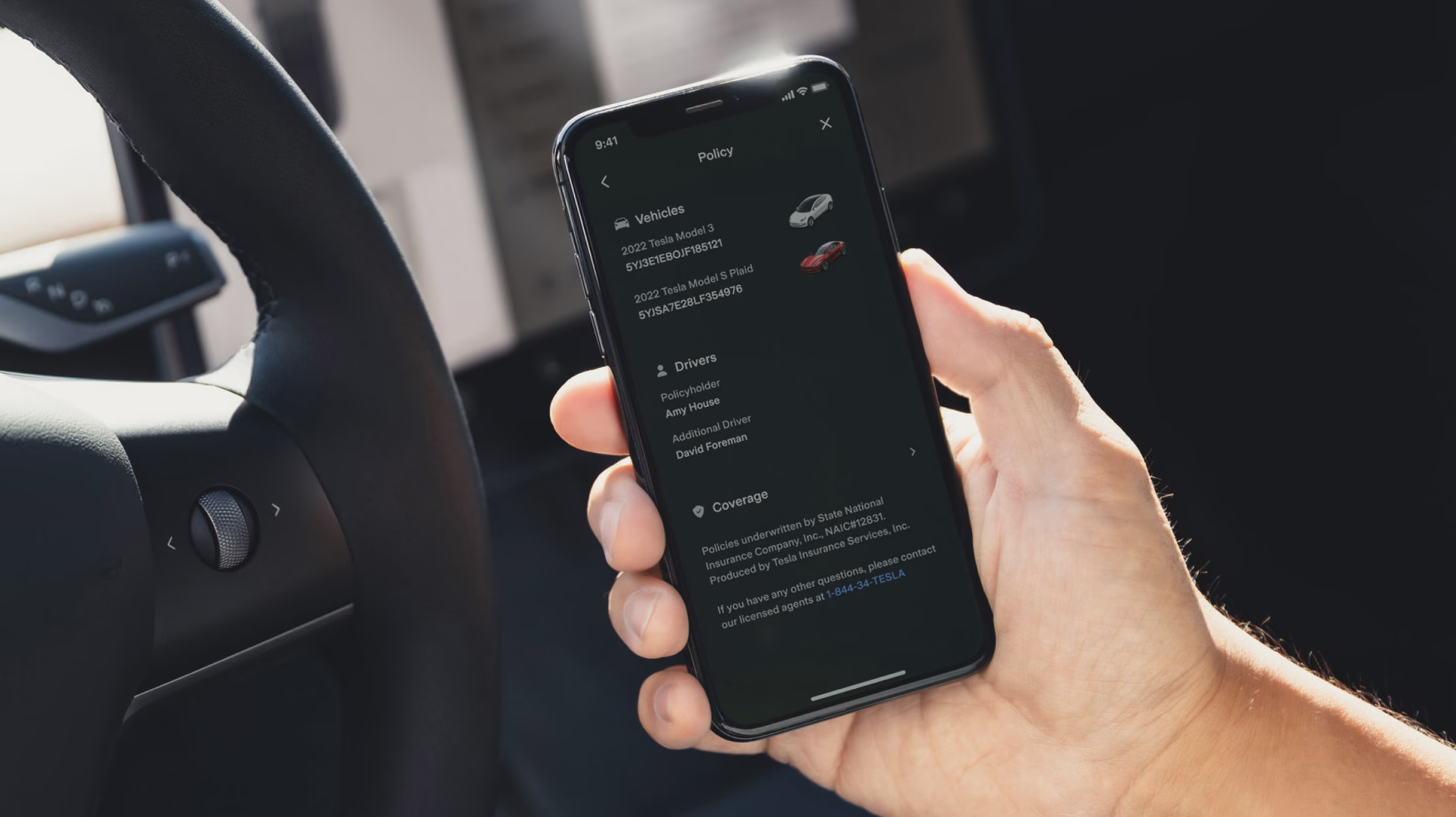
Tesla Insurance has officially expanded to a new U.S. state, its thirteenth since its launch in 2019.
Tesla has confirmed that its in-house Insurance program has officially made its way to Florida, just two months after the company filed to update its Private Passenger Auto program in the state. It had tried to offer its insurance program to drivers in the state back in 2022, but its launch did not happen.
Instead, Tesla refiled the paperwork back in mid-October, which essentially was the move toward initiating the offering this month.
BREAKING: Tesla Insurance has just officially launched in Florida.
This is the first new state to receive @Tesla Insurance in more than 3 years. In total, Tesla insurance is now available in 13 U.S. states (map in thread below of all the states).
Tesla Insurance in Florida uses… pic.twitter.com/bDwh1IV6gD
— Sawyer Merritt (@SawyerMerritt) December 17, 2025
Tesla’s in-house Insurance program first launched back in late 2019, offering a new way to insure the vehicles that was potentially less expensive and could alleviate a lot of the issues people had with claims, as the company could assess and repair the damage itself.
It has expanded to new states since 2019, but Florida presents a particularly interesting challenge for Tesla, as the company’s entry into the state is particularly noteworthy given its unique insurance landscape, characterized by high premiums due to frequent natural disasters, dense traffic, and a no-fault system.
Annual average premiums for Florida drivers hover around $4,000 per year, well above the national average. Tesla’s insurance program could disrupt this, especially for EV enthusiasts. The state’s growing EV adoption, fueled by incentives and infrastructure development, aligns perfectly with Tesla’s ecosystem.
Moreover, there are more ways to have cars repaired, and features like comprehensive coverage for battery damage and roadside assistance tailored to EVs address those common painpoints that owners have.
However, there are some challenges that still remain. Florida’s susceptibility to hurricanes raises questions about how Tesla will handle claims during disasters.
Looking ahead, Tesla’s expansion of its insurance program signals the company’s ambition to continue vertically integrating its services, including coverage of its vehicles. Reducing dependency on third-party insurers only makes things simpler for the company’s automotive division, as well as for its customers.
News
Tesla Full Self-Driving gets sparkling review from South Korean politician
“Having already ridden in an unmanned robotaxi, the novelty wasn’t as strong for me, but it drives just as well as most people do. It already feels like a completed technology, which gives me a lot to think about.”
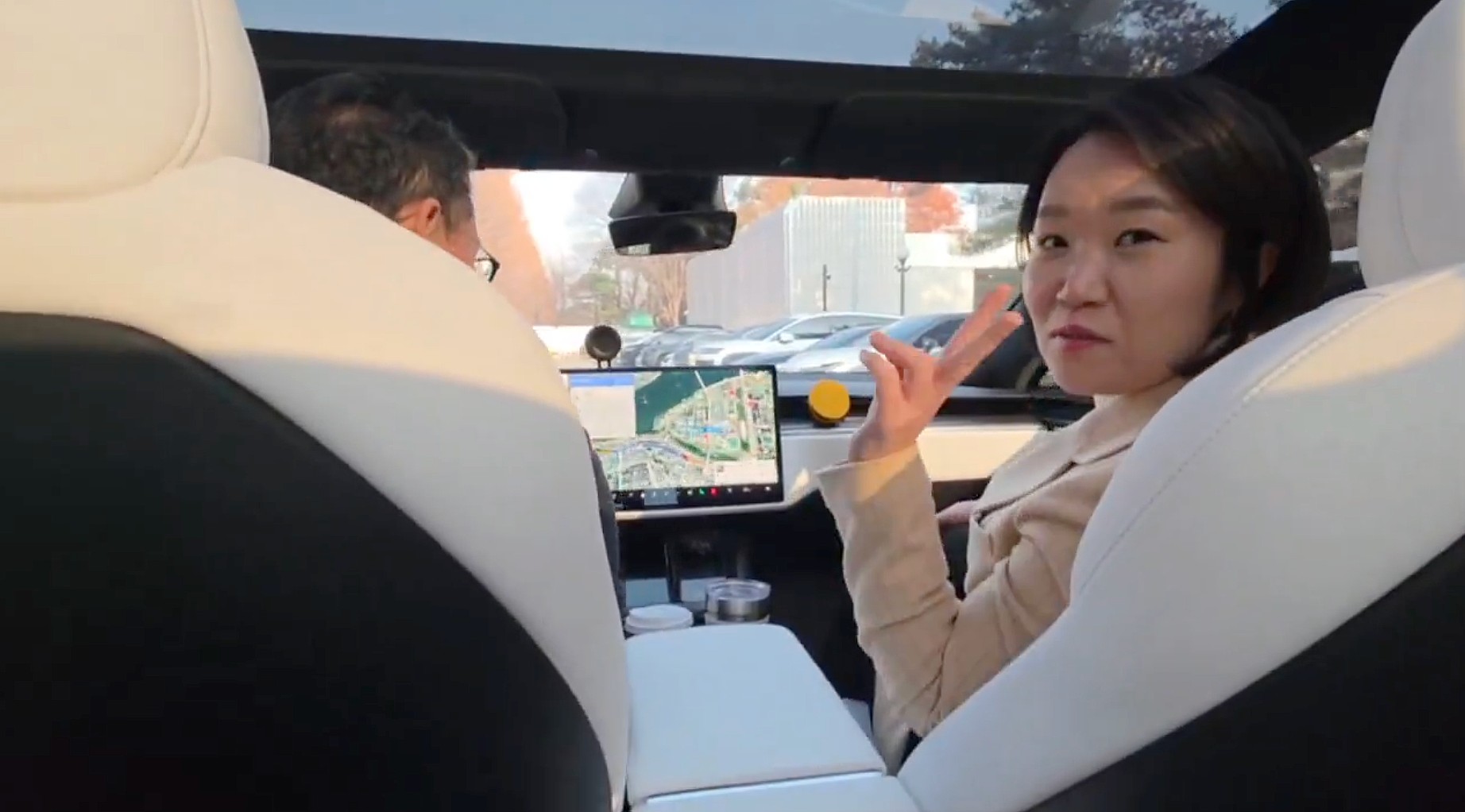
Tesla Full Self-Driving got its first sparkling review from South Korean politician Lee So-young, a member of the country’s National Assembly, earlier this week.
Lee is a member of the Strategy and Finance Committee in South Korea and is a proponent of sustainable technologies and their applications in both residential and commercial settings. For the first time, Lee was able to utilize Tesla’s Full Self-Driving technology as it launched in the country in late November.
Her thoughts on the suite were complimentary to the suite, stating that “it drives just as well as most people do,” and that “it already feels like a completed technology.”
드디어 오늘, 서울에서 테슬라 FSD 체험 했습니다.
JiDal Papa님의 모델S 협찬에 힘입어^^ 파파님 정말 감사합니다.
국회 -> 망원시장 -> 홍익대 -> 국회 복귀 코스였고요.
이미 무인 로보택시를 타봐서 그런지 신기함은
덜했지만, 웬만한 사람만큼 운전을 잘하네요.이미 완성된 기술이라고… pic.twitter.com/8pAidHBpRG
— 이소영 국회의원 (Soyoung Lee) (@im_soyounglee) December 17, 2025
Her translated post says:
“Finally, today I got to experience Tesla FSD in Seoul. Thanks to the Model S sponsored by JiDal Papa^^, I’m truly grateful to Papa. The route was from the National Assembly -> Mangwon Market -> Hongik University -> back to the National Assembly. Having already ridden in an unmanned robotaxi, the novelty wasn’t as strong for me, but it drives just as well as most people do. It already feels like a completed technology, which gives me a lot to think about. Once it actually spreads into widespread use, I feel like our daily lives are going to change a lot. Even I, with my license gathering dust in a drawer, don’t see much reason to learn to drive a manual anymore.”
Tesla Full Self-Driving officially landed in South Korea in late November, with the initial launch being one of Tesla’s most recent, v14.1.4.
It marked the seventh country in which Tesla was able to enable the driver assistance suite, following the United States, Puerto Rico, Canada, China, Mexico, Australia, and New Zealand.
It is important to see politicians and figures in power try new technologies, especially ones that are widely popular in other regions of the world and could potentially revolutionize how people travel globally.
